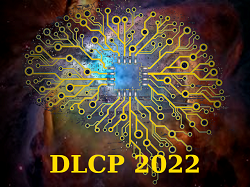Speaker
Description
The report presents the possibilities for using the ML/DL/HPC ecosystem deployed on the HybriLIT Heterogeneous Platform (MLIT JINR) on top of JupyterHub, which provides opportunities for solving tasks not only in the field of machine learning and deep learning, but also for the convenient organization of calculations and scientific visualization. The ecosystem allows one to develop and implement program modules in Python, as well as to carry out methodical computations. The relevance of deploying such an environment is primarily associated with the great demand for software modules that are provided to a group of researchers or the scientific community, when all stages of the study can be reproduced; the code has been modified and used by the scientific community. Using the example of solving a specific problem to study the dynamics of magnetization in a Phi-0 Josephson Junction (Superconductor-Ferromagnet-Superconductor structure), a methodology for developing software modules is presented; it enables not only to carry out calculations, but also to visualize the results of the study and accompany them with the necessary formulas and explanations. In addition, the possibility of parallel implementation of the algorithm for performing computations for various values of parameters of the model based on the Joblib Python library is shown, and the results of computational experiments demonstrating the efficiency of parallel data processing are presented.
Another example of the capabilities of the ML/DL/HPC ecosystem is the development of modules with the integration of the MATLAB code in the Jupyter Notebook, which allows one to effectively perform applied computations for image analysis.
This work was supported by Russian Science Foundation grant No 22-71-10022.
| Agreement to place | Participants agree to post their abstracts and presentations online at the workshop website. All materials will be placed in the form in which they were provided by the authors |
|---|

